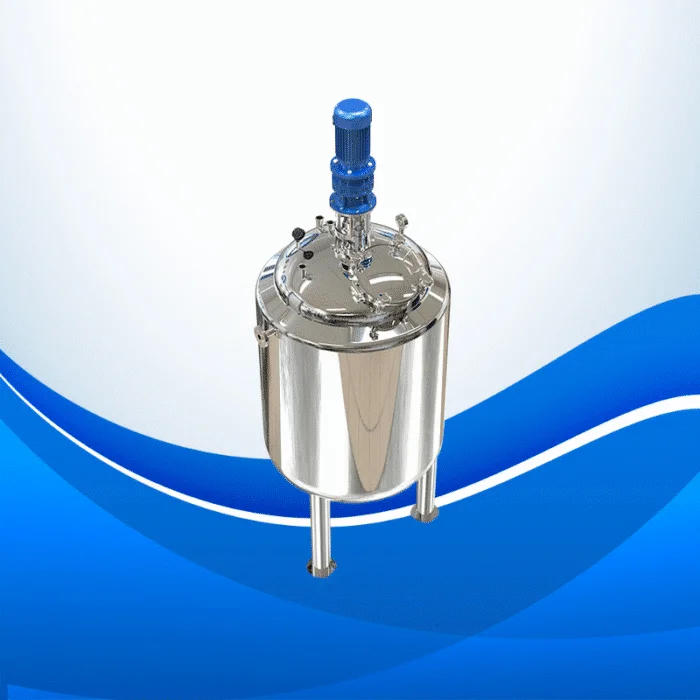The oil and gas industry is recognised for its intricate processes, which involve handling a diverse range of substances, including crude oil, natural gas, various chemicals, and additives. To maintain efficiency, safety, and quality in production, the right equipment is essential. One such piece of equipment is the Jacket Mixing Tank. These tanks play a critical role in ensuring the proper mixing and temperature control of various materials, which is vital for the success of many oil and gas operations.
What is a Jacket Mixing Tank?
A Jacket Mixing Tank is an industrial mixing vessel equipped with a heating or cooling jacket that surrounds the tank. This jacket allows for precise temperature control of the contents inside. The tank also features an internal mixing mechanism designed to blend substances evenly, ensuring a uniform mixture. In the oil and gas industry, these tanks are particularly useful in processes that require the blending of chemicals, additives, or other substances at specific temperatures and pressures.
These tanks can be used for a variety of applications, including the production of emulsions, mixing drilling fluids, and preparing chemicals used in various extraction processes. The versatility of Jacket Mixing Tanks makes them invaluable to the oil and gas industry, where precise control of both temperature and mixing is critical for optimal performance.
Why Temperature Control is Crucial in the Oil and Gas Industry
Temperature control is one of the primary reasons the Jacket Mixing Tank is essential in the oil and gas sector. Many substances involved in oil extraction and processing require particular temperature conditions to remain stable or to react appropriately. If temperatures are not regulated, the product’s quality can be compromised, or the process can become inefficient or unsafe.
For instance, when producing emulsions or mixing drilling fluids, maintaining the correct temperature is crucial for achieving the desired consistency and chemical properties. If the temperature is too high, certain chemicals may degrade, which can affect the integrity of the final product. On the other hand, if the temperature is too low, the substances may not mix properly, leading to uneven distribution and potential performance issues.
Jacket Mixing Tanks provide the precise temperature control needed to manage these conditions effectively. With the ability to heat or cool the contents of the tank as needed, these tanks ensure that the mixture remains within the optimal temperature range for processing.
Applications of Jacket Mixing Tanks in Oil and Gas
The Jacket Mixing Tank is used in several applications within the oil and gas industry, each of which requires careful temperature and mixing control. Some of the most common applications include:
Mixing Drilling Fluids
Drilling fluids, also known as mud, are essential for lubricating drilling equipment, cooling the drill bit, and stabilizing the wellbore. These fluids are often composed of a combination of water, chemicals, and clay minerals, and they need to be mixed at a specific temperature to achieve the desired viscosity and density.
Jacket Mixing Tanks are used to blend these fluids effectively. By maintaining a precise temperature throughout the mixing process, these tanks ensure that the fluids have the right consistency for efficient drilling operations. The temperature control in the tank helps prevent issues like clumping, separation, or chemical degradation, which could negatively impact drilling efficiency.
Chemical Preparation
In the oil and gas industry, a variety of chemicals are used throughout the extraction and refining process. These chemicals often need to be mixed in precise ratios at specific temperatures to achieve the desired chemical reactions. For example, chemicals used in hydraulic fracturing (fracking) require careful mixing and temperature control to ensure optimal performance.
Jacket Mixing Tanks are ideal for mixing these chemicals, as they can maintain the correct temperature while ensuring that the substances are evenly blended. This helps ensure that the chemicals react in the intended way, leading to more efficient extraction and processing.
Emulsion Production
An emulsion is a mixture of two liquids that are typically immiscible, such as oil and water. In the oil and gas industry, emulsions are used in various applications, such as enhancing the efficiency of specific extraction processes. However, creating a stable emulsion requires careful mixing and temperature control to ensure that the two substances remain evenly distributed.
Jacketed mixing tanks are particularly effective for producing emulsions. The internal mixing mechanism ensures that the oil and water are thoroughly blended, while the jacket surrounding the tank provides precise temperature control necessary for the emulsion to remain stable.
Enhancing Safety and Reducing Risks
In the oil and gas industry, safety is a top priority. Many of the substances used in oil extraction and refining are highly volatile and can pose significant risks if not handled properly. The Jacket Mixing Tank helps mitigate these risks by maintaining a safe temperature throughout the mixing process.
By preventing the overheating of chemicals and other substances, Jacket Mixing Tanks reduce the likelihood of chemical reactions that could lead to hazardous situations, such as fires or explosions. Furthermore, by ensuring that substances are mixed uniformly, the tank helps maintain the stability of the mixture, reducing the risk of accidental spills or leaks.
Improving Operational Efficiency
The oil and gas industry relies on efficiency to maximise production and reduce costs. Jacketed mixing tanks contribute to this efficiency by streamlining the mixing and temperature control process. By combining both functions into a single piece of equipment, these tanks help reduce the need for multiple units, saving space and lowering equipment costs.
Additionally, the precise temperature control offered by the Jacket Mixing Tank ensures that each batch of material is processed quickly and accurately. This reduces the time required for preparation, enabling faster turnaround times and more productive operations. By improving mixing consistency and reducing the likelihood of errors, the Jacket Mixing Tank helps ensure that production runs smoothly and efficiently.
Ensuring Regulatory Compliance
The oil and gas industry is heavily regulated, with strict safety and environmental standards that must be adhered to. Jacket Mixing Tanks help manufacturers meet these regulations by ensuring that the substances they are processing remain within the required temperature and mixing conditions. This is essential for meeting the safety, environmental, and quality standards set by regulatory bodies.
By maintaining precise control over the mixing and temperature processes, Jacket Mixing Tanks contribute to the overall safety and compliance of oil and gas operations. This ensures that companies can continue to operate efficiently while meeting the rigorous standards required by law.
Conclusion
The Jacket Mixing Tank plays a crucial role in the oil and gas industry by providing precise temperature control and effective mixing capabilities. From mixing drilling fluids to preparing chemicals and producing emulsions, these tanks help ensure that the substances involved in oil extraction and refining processes remain stable and effective.
By enhancing safety, improving operational efficiency, and ensuring compliance with regulatory standards, Jacket Mixing Tanks help oil and gas companies maintain high-quality production while minimizing risks. Their versatility and reliability make them an essential tool for achieving consistent and efficient results in this demanding industry. Investing in the right Jacket Mixing Tank can lead to more efficient processes, improved safety, and better overall performance in the oil and gas industry.

